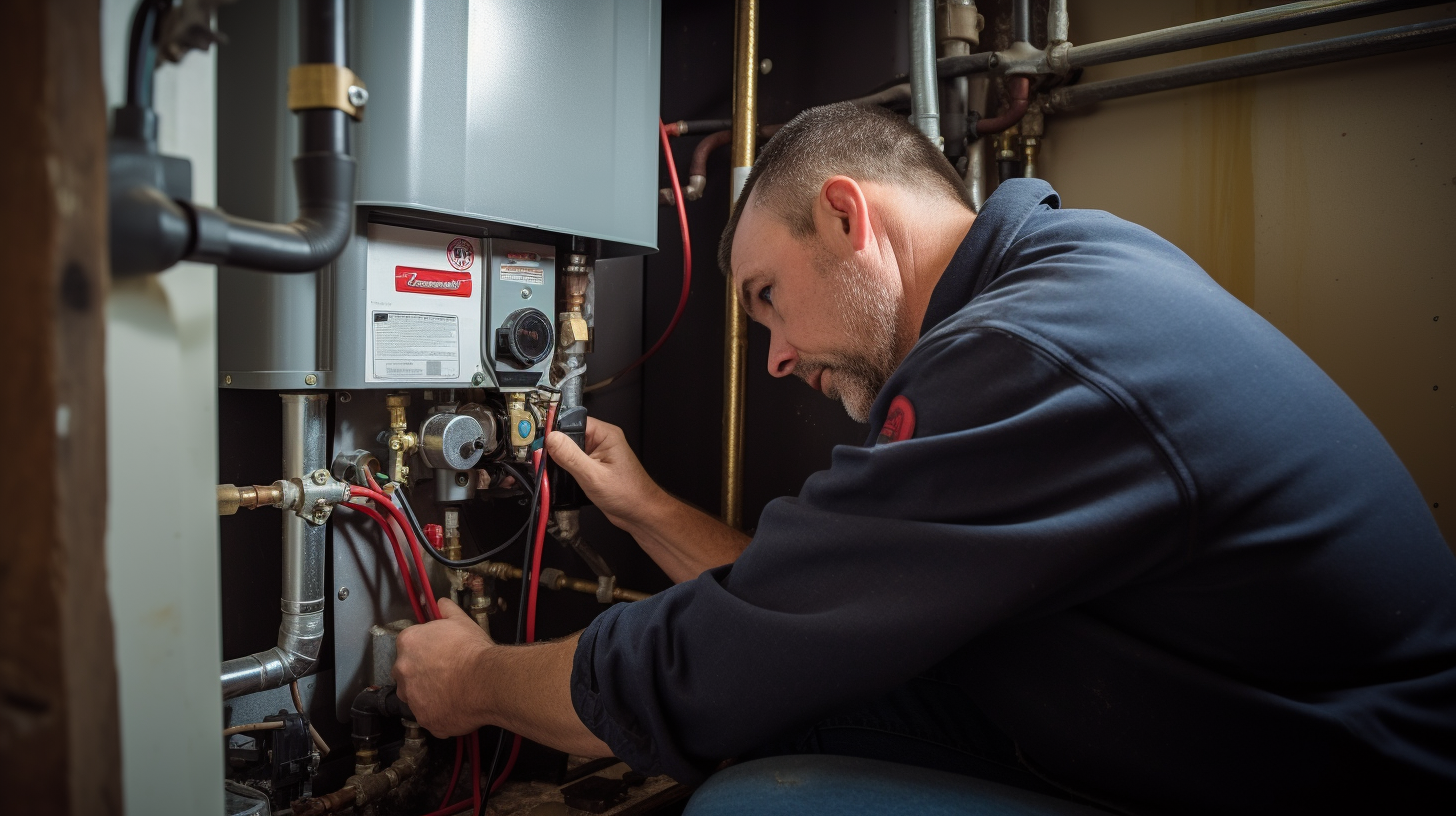In this article, we’re going to share with you the three best techniques for tankless water heater repairs.
When it comes to dealing with common issues, we’ve got you covered. Our diagnostic and troubleshooting techniques will help you identify the problem quickly and accurately.
And once you know what’s wrong, we’ll guide you through the most effective repair methods.
Say goodbye to cold showers and hello to a fully functioning tankless water heater!
Common Tankless Water Heater Issues
When dealing with common tankless water heater issues, we often encounter problems caused by insufficient water flow. This can be due to various reasons such as a clogged filter, a faulty pressure relief valve, or a malfunctioning flow sensor.
Insufficient water flow can result in inadequate heating, reduced water pressure, or even complete shutdown of the water heater. To address this issue, we recommend checking the filter first and cleaning or replacing it if necessary.
Additionally, inspect the pressure relief valve for any leaks or blockages and ensure it’s functioning properly. If the problem persists, it may be necessary to check the flow sensor and recalibrate it if needed.
Diagnostic and Troubleshooting Techniques
To begin diagnosing and troubleshooting tankless water heater issues, we can start by conducting a thorough inspection of the unit’s components and connections. This step is crucial as it allows us to identify any visible signs of damage or malfunction. We should check the heating elements, sensors, and valves for any signs of wear or corrosion.
Additionally, we should examine the gas or water supply connections for any leaks or blockages. Once we’ve completed the inspection, we can move on to testing the unit’s functionality. This may involve checking the electrical connections, adjusting the temperature settings, or resetting any error codes.
Effective Repair Methods
For the most effective repair methods for tankless water heaters, we recommend thoroughly assessing the unit’s components and connections. This step is crucial in identifying any faulty parts or loose connections that may be causing the issues.
Once the problem has been identified, it’s important to follow the manufacturer’s guidelines for repairing or replacing the faulty component. This may involve removing and cleaning the affected part, tightening loose connections, or replacing damaged components.
It’s also important to check for any mineral build-up or sediment in the unit, as this can affect its performance. Regular maintenance, such as flushing the system and descaling, can help prevent these issues and prolong the lifespan of the tankless water heater.
Frequently Asked Questions
How Often Should I Flush My Tankless Water Heater to Prevent Mineral Buildup?
To prevent mineral buildup in your tankless water heater, we recommend flushing it regularly. The frequency of flushing depends on the hardness of your water and the manufacturer’s guidelines. Flushing helps remove sediment and mineral deposits that can affect the heater’s efficiency and lifespan.
It’s important to follow the proper flushing procedure to ensure optimal performance. Regular maintenance like this can extend the life of your tankless water heater and keep it running smoothly.
Can I Install a Tankless Water Heater Myself, or Should I Hire a Professional?
Can we install a tankless water heater ourselves, or should we hire a professional?
It’s important to consider the complexity of the installation process and our level of expertise. While some may feel confident in DIY installation, it’s generally recommended to hire a professional.
They’ve the knowledge and experience to ensure the installation is done correctly and safely. Plus, professionals can offer valuable advice and troubleshoot any potential issues that may arise.
Are Tankless Water Heaters More Energy-Efficient Than Traditional Tank Water Heaters?
Tankless water heaters are more energy-efficient than traditional tank water heaters. They only heat water when it’s needed, eliminating the standby energy loss that occurs with tank water heaters. This means that tankless water heaters can provide hot water on demand while using less energy overall.
Additionally, tankless water heaters have a longer lifespan, reducing the need for frequent replacements. These advantages make tankless water heaters a more eco-friendly and cost-effective choice for homeowners.
What Is the Average Lifespan of a Tankless Water Heater?
The average lifespan of a tankless water heater is around 20 years.
It’s important to note that regular maintenance and proper usage can greatly impact its longevity.
For instance, flushing the system annually helps remove mineral deposits that can affect its performance.
Additionally, ensuring proper ventilation and water pressure also contribute to its overall lifespan.
Can a Tankless Water Heater Be Installed in Any Type of Home, or Are There Specific Requirements?
Sure, a tankless water heater can be installed in any type of home as long as there are specific requirements met. These requirements may include proper gas supply, ventilation, and electrical capacity.
It’s important to consult with a professional to ensure that your home meets these requirements and to determine the best location for installation.
Conclusion
In conclusion, tankless water heater repairs can be successfully carried out by understanding the common issues, using diagnostic techniques, and implementing effective repair methods.
It’s important to address any problems promptly to ensure the continuous and efficient functioning of the water heater.
With proper maintenance and timely repairs, tankless water heaters can provide long-lasting and reliable hot water supply for your household needs.



